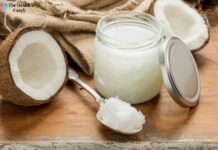If this happens to you, don’t worry – there are a few ways to get the dye off your skin quickly and easily. Whether you accidentally got hair dye on your skin or you’re trying to remove dye from your scalp, it’s important to know how to get hair dye off skin properly. In this blog post, we’ll outline the best methods for removing hair dye from your skin as well as share some tips for preventing any stains in the future.
Getting hair dye on your skin can be frustrating, especially in a visible area like your face or neck. But don’t worry; there are various techniques for removing hair colour from your skin. This article reviews practical ways to quickly and easily get hair dye off your skin quickly and easily.
One of the most common and effective ways to remove hair dye from your skin is by using an oil-based cleanser, such as coconut or baby oil. Apply a small amount of the oil to the stained area and gently massage it. The oil will help break down the dye and lift it off your skin. You can then wipe away the oil and dye with a clean cloth or cotton ball.
Another method you can try is using dish soap and baking soda. Mix a small amount of each together to create a paste, then apply it to the stained area and gently rub it in. The baking soda will help exfoliate your skin while the dish soap breaks down the dye. Rinse the area with warm water and repeat until the stain is removed.
How to Remove Hair Dye From Skin
If you’re like me, you love changing your hair color as often as possible. But sometimes, the hair dye can be a little too harsh on your skin. In this blog post, I’m going to teach you how to remove hair dye from skin quickly and easily. Just because you dyed your hair a new color doesn’t mean you have to live with it for weeks until the dye grows out. In fact, there are several ways to remove hair dye from skin quickly and easily. Keep reading for our tips on how to get rid of hair dye fast.
-
Using Petroleum Jelly
Petroleum jelly could be your solution if you’re looking for a simple way to prevent hair dye from staining your skin. This common household item can create a barrier between your skin and the hair dye, making it easier to wipe away any stains that do occur.
To use petroleum jelly, apply a small amount around the hairline and on the ears before you start dyeing your hair. Be sure to spread it evenly and avoid getting any on your hair. This will help to keep the dye from penetrating your skin and creating unsightly stains.
Another benefit of using petroleum jelly is that it can be used to remove hair dye stains that have already occurred. Rub a small amount on a cotton pad over the stained area. The petroleum jelly will help to break down the dye and make it easier to wipe away.
It’s important to note that petroleum jelly should only be used on the skin, not the hair. If you accidentally get some on your hair, it can be difficult to remove and may interfere with the dyeing process.
While petroleum jelly can be a helpful tool for preventing and removing hair dye stains, it could be better. It’s still a good idea to wear gloves when dyeing your hair and to be careful not to let the dye come into contact with your skin. If you do end up with stains, don’t panic – there are plenty of other methods to remove them.
-
Using Soap and Water
Use soap and warm water as your first line of defence if you find hair dye on your skin and make an effort to remove it. This simple and effective method can often remove hair dye stains from your skin.
To use this method:
- Wet the affected area with warm water and apply soap to the stain.
- Rub the soap into the stain in a circular motion using a cotton pad or a rag.
- Apply gentle pressure and avoid rubbing too hard, which can cause irritation or dry skin.
Rinse the area with warm water and repeat the process if necessary. If the stain is particularly stubborn, you may need a stain remover or another method.
It’s important to note that this method may only work for some, especially if the hair dye has already dried or the stain is intense. In these cases, you may need to try another method, such as rubbing alcohol, nail polish remover, or baking soda.
To prevent hair dye stains on your skin in the first place, it’s a good idea to wear gloves when applying hair dye and to apply a coat of Vaseline or mineral oil around your scalp to avoid contact with the skin. Additionally, a shampoo designed to remove hair dye stains can help prevent future stains.
-
Using Vaseline
If you’re dyeing your hair at home, you might accidentally get some hair dye on your skin. This can be frustrating, especially if you want a clean and professional look. Fortunately, there are several ways to remove hair dye from your skin, and one of the most effective methods is using Vaseline.
Vaseline or petroleum jelly is a thick, oily substance that can help prevent hair dye from staining your skin. Before you start dyeing your hair, apply a thin layer of Vaseline around your hairline, ears, and neck. This will create a barrier between your skin and the hair dye, preventing the dye from seeping into your pores and staining your skin.
When you’re done dyeing your hair, wipe off any excess hair dye with a damp cloth or paper towel. Then, use a cotton ball or pad to remove the Vaseline from your skin. You can also use a gentle cleanser to wash away any remaining residue.
Using Vaseline is a quick and easy way to remove hair dye from your skin without causing any irritation or damage. It’s also a great option if you have sensitive skin or want a natural and affordable solution.
Using Vaseline is a great option if you want to avoid staining your skin with hair dye. It’s easy to apply, effective, and gentle on your skin. So, the next time you’re dyeing your hair at home, have some Vaseline to help you achieve a clean and professional look.

-
Using Baby Oil or Makeup Remover
If soap and water don’t trick, use baby oil or makeup remover to remove hair dye stains from your skin. These products can effectively break down the dye and lift it off your skin. Here’s how to use them:
- Apply a small amount of baby oil or makeup remover to a cotton ball or pad.
- Gently rub the cotton ball or pad over the stained area in a circular motion.
- Continue rubbing until the dye starts to lift off your skin.
- Use a clean cotton ball or pad to remove the oil or makeup remover.
- Repeat as necessary until the stain is completely gone.
It’s important to note that baby oil and makeup remover can be harsh on your skin, so you should only use them as a last resort. Avoid using these products altogether if you have sensitive skin.
Also, moisturize your skin after using baby oil or makeup remover. These products can strip your skin of natural oils, leaving it dry and irritated. Applying a moisturizer can help prevent this and keep your skin looking healthy.
Finally, if you’re trying to prevent staining in the first place, you can apply a thin layer of petroleum jelly or a bandage around your hairline and ears before dyeing your hair. This can help keep the dye from contacting your skin and causing stains.
-
Using Olive Oil or Coconut Oil
If you’re looking for a natural way to remove hair dye from your skin, olive oil and coconut oil are great options. Both oils are mild on the skin and have moisturising effects that can aid in the relief of any discomfort produced by the hair colour.
To use olive or coconut oil to remove hair dye from your skin, Using a cotton ball or pad, carefully dab a little quantity of oil onto the discoloured area. You might also apply the oil to your skin using your fingertips. Let the oil sit on your skin for a few minutes before wiping it off with a clean cloth or tissue.
It’s important to note that while olive oil and coconut oil can effectively remove hair dye stains, they may not work for everyone. If you have sensitive skin or are prone to breakouts, Before using any new items on your skin, consult with a dermatologist.
Another option is to use baby wipes containing coconut or olive oil. These wipes are designed to be gentle on the skin and help remove hair dye stains without causing any irritation.
In conclusion, olive oil and coconut oil are natural and effective ways to remove hair dye from your skin. They are mild on the skin and can aid in moisturising and soothing any discomfort caused by hair colour. However, if you have sensitive skin or are prone to breakouts, Before using any new items on your skin, consult with a dermatologist.
-
Using Hydrogen Peroxide or Bleach
If you have stubborn hair dye stains on your skin, hydrogen peroxide or bleach can be effective solutions to remove them. However, caution must be exercised when using these products as they can be harsh on the skin and cause irritation.
Mix equal parts of 20-volume hydrogen peroxide and water in a bowl to use hydrogen peroxide. Add a cotton ball to the mixture and apply it to the affected area. Rub gently for a few minutes, and then rinse with warm water. Repeat the process as necessary until the stain is removed.
Bleach can also remove hair dye stains, but it should be diluted with water before use. Mix one part bleach with ten parts water in a bowl. Add a cotton ball to the mixture and apply it to the affected area. Rub gently for a few minutes, and then rinse with warm water. Repeat the process as necessary until the stain is removed.
It is important to note that these methods should not be used on the scalp, cuticle, or any sensitive areas of the skin. If you experience any itching, redness, or irritation, discontinue use immediately and consult a colorist or a salon professional for advice.
In summary, hydrogen peroxide and bleach can effectively remove hair dye stains from the skin. However, they should be used with caution and only in non-sensitive areas. If you experience any adverse reactions, seek professional advice.
-
Using Lava Soap or Body Scrub
If you have hair dye stains on your skin, using Lava Soap or a body scrub can be a great way to remove them. These products contain a mild abrasive that can help remove dead skin cells and the dye. Here’s how you can use them:
- Wet the affected area with lukewarm water.
- Apply a small amount of Lava Soap or body scrub to the area.
- Gently rub the area in a circular motion for several seconds.
- Rinse the area thoroughly with lukewarm water.
Repeat this process as needed until the dye stains are entirely removed.
When using Lava Soap or body scrub, it’s essential to be gentle to avoid irritating your skin. Stop immediately if you experience any itchiness or discomfort while using these products, and rinse the area thoroughly with lukewarm water.
If you have sensitive skin, consider using a facial cleanser instead of Lava Soap or a body scrub. Redken makes a great facial cleanser that can help to remove hair dye stains without irritating your skin.
Using Lava Soap or a body scrub can effectively remove hair dye stains from your skin. Gently use these products and rinse the area thoroughly with lukewarm water.
-
Waiting It Out
If you notice hair dye stains on your skin, your first instinct might be to start scrubbing immediately. However, sometimes it’s best to wait it out.
If the dye is still wet, wiping it gently with a damp cloth or paper towel is usually effective. However, let the dye soak for a bit if it has dried.
One option is to apply a face cleanser or hair color stain remover to the affected areas, then cover them with a headband or towel and let them soak overnight. In the morning, wash the area with warm water and moisturize to prevent dryness.
Another option is to apply a moisturizing product like Aquaphor or petroleum jelly to the skin around your eyebrows and hairline before dyeing your hair. This creates a barrier that can help prevent dye from staining your skin.
If you decide to wait it out, be aware that redness and irritation may occur. If this happens, consult a dermatologist for advice on soothing and healing your skin.
Overall, waiting it out can be a helpful strategy for removing hair dye from your skin. Whether you let it soak or apply a barrier beforehand, taking a little extra time can help prevent dryness and irritation.
Frequently Asked Questions
How do you get hair dye off your skin fast?
If you need to quickly remove hair dye from your skin, try using soap and warm water. Gently scrub the affected area with soap and water until the dye is removed. You can also use a makeup remover or baby wipes to remove the dye.
Does permanent hair dye wash off skin?
Permanent hair dye is designed to be long-lasting and may not wash off skin easily. However, you can use soap and warm water, makeup remover wipes, or baby wipes to remove the dye from your skin.
Does hand sanitizer remove hair dye?
Hand sanitizer may help remove hair dye from your skin, but more effective methods exist. Use soap and warm water, makeup remover wipes, or baby wipes to remove the dye from your skin.
Does Vaseline remove hair dye from skin?
Vaseline may help remove hair dye from your skin, but more effective methods exist. Use soap and warm water, makeup remover wipes, or baby wipes to remove the dye from your skin.
What removes permanent hair dye from skin?
If you need to remove permanent hair dye from your skin, try using a mixture of baking soda and dish soap. To remove the colour, make a paste by combining baking soda and dish soap in equal parts. Scrub the afflicted area with the mixture using a gentle motion.
How to get hair dye off skin without rubbing alcohol?
If you don’t have rubbing alcohol, you can use vinegar or lemon juice to remove hair dye from your skin. Soak a cotton ball in vinegar or lemon juice and gently rub the affected area until the dye is removed. You can also try using soap and warm water, makeup remover wipes, or baby wipes to remove the dye from your skin.
Also Read:
How To Remove Super Glue From Skin





















Very good written article. It will be supportive to anyone who usess it, including me. Keep up the good work – looking forward to more posts.